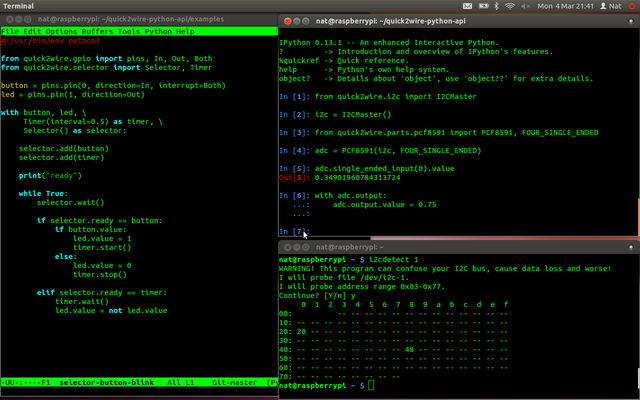Learning Python
Python is a general-purpose interpreted, interactive, object-oriented and high-level programming language, it has a design philosophy that emphasises code readability using significant whitespace. It also provides constructs that enable clear programming on both small and large scales. It was created by Guido van Rossum and first released in 1991.

As a programmer you should be able to know at least two programming languages, in the case of learning python you may asking what is this? What can I use it for? Well below are some applications of python:
- Data Science (machine learning, data visualisation and data analysis).
In Data Science with respect to machine learning, there are popular machine learning libraries and frameworks for Python. Two of the most popular ones are: scikit-learn and Tensor Flow.
scikit-learn comes with some of the more popular machine learning algorithms built-in, while Tensor Flow is more of a low-level library that allows you to build custom machine learning algorithms. If you’re just getting started with a machine learning project, you should first start with scikit-learn. If you start running into efficiency issues, then you should start looking into Tensor Flow. For you to understand this machine learning you should acquaint yourself with the basic knowledge of calculus and linear algebra.
Data Visualization Data analysis and with Python
One of the most popular libraries for data visualization is Matplotlib. It’s a good library to get started with because:
It’s easy to get started with, some other libraries such as seaborn is based on it. So, learning Matplotlib will help you learn these other libraries later on.
For you to understand this very well, you should first learn and understand the fundamentals of data visualisation and data analysis. When you are done learning the fundamentals of data visualisation and analysis, learning fundamentals of statistics from websites like Coursera and Khan Academy will go a long way in helping your course.
Scripting
Scripting usually refers to writing small programs that are designed to automate simple tasks. On the other scripting languages are languages that cannot run on their own thereby requires an event handler to function. Python is suited for this mainly because it has relatively simple syntax and is easy to write. It is also quick to write something relatively small with it and test it.
When programming a game, one could make use of the library called PyGame to develop games, but it’s not the most popular gaming engine out there. You could use it to build a hobby project, this should not be chosen if you are serious about game development, but you could start with Unity with C#, which is one of the most popular gaming engines. It allows you to build a game for numerous platforms, including Android Mac, Windows, and iOS. Even some companies have started using JavaScript to create Desktop applications. For example, Slack’s desktop app was built with something called Electron. Which allows you to build desktop applications with JavaScript.Web Development
In using web frameworks it easier to build common back-end logic. This includes mapping different URLs to chunks of Python code, dealing with databases, and generating HTML files users see on their browsers. Web frameworks that are based on Python like Django and Flask have recently become very popular for web development. These are the two most popular web frameworks in python. The difference between Django and Flask is that Django provides an all-inclusive experience: you get an admin panel, database interfaces, an ORM (object-relational mapping), and directory structure for your apps and projects out of the box while Flask provides simplicity, flexibility and fine-grained control.
If you’re a beginner, Flask is probably a better choice because it has fewer components to deal with. It is also a better choice if you want more customization. But, if you are looking to build something straight-forward, Django will probably let you get there faster. These web frameworks help you create server-side code (back-end code) in Python. That’s the code that runs on your server, as opposed to on users’ devices and browsers (front-end code), if you’re not familiar with the difference between back-end code and front-end code.
Finally, if you are to write a back-end code /server-side code python is not the only choice here because there are many other choices that you can go for, including Node.js, which is based on JavaScript.